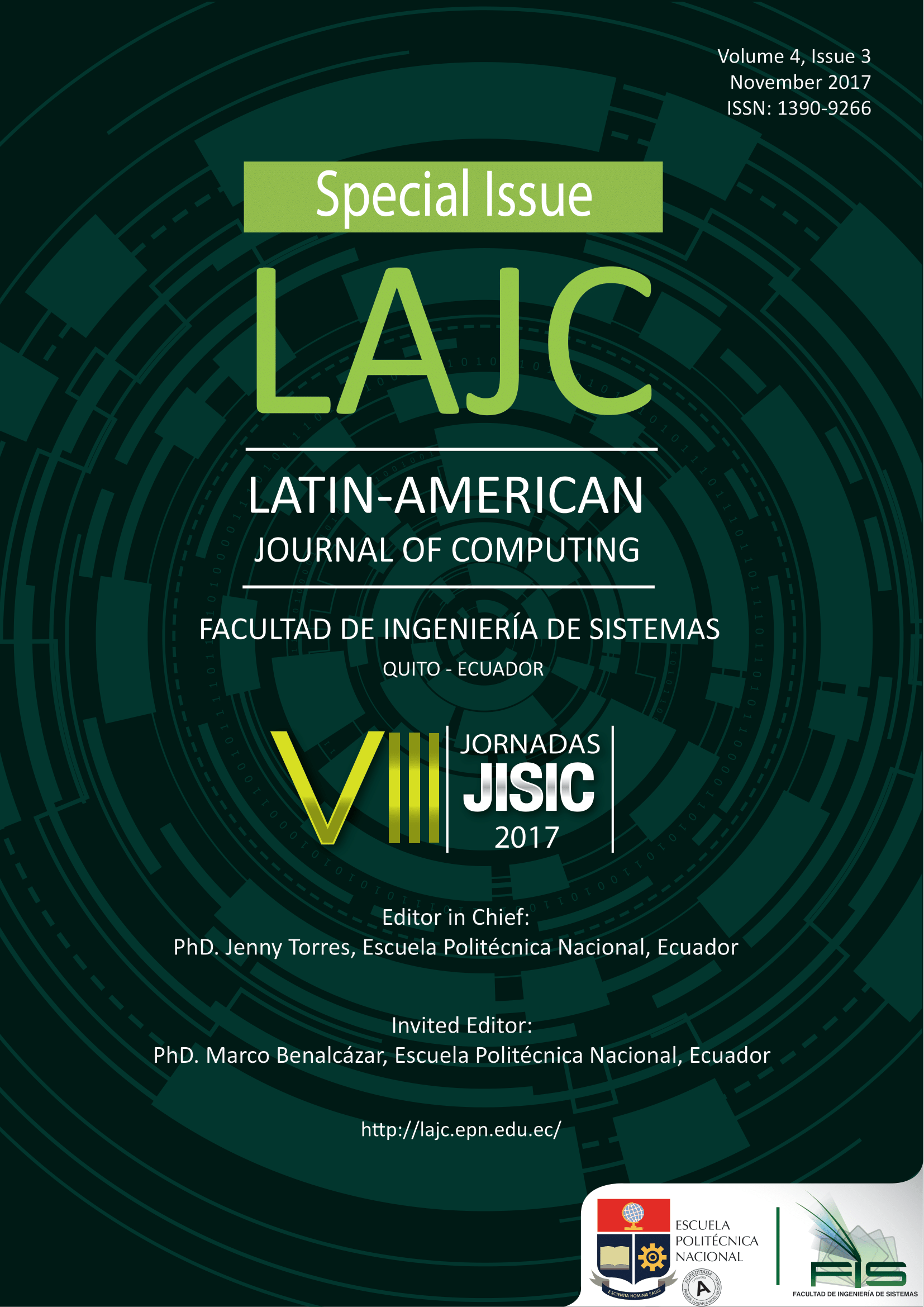Implementation of an Affective Model for MASOES
Keywords:
Multiagent System, Affective Computing, Affective Model, Emotional Interaction, MASOES.Abstract
Different authors seek to improve the interactionbetween intelligent agents in multi-agent systems, an example isthe affective model of MASOES, which through the generationof emotions promotes different types of behaviors. Although thisaffective model has been formally verified at the design level,it has not been verified at the implementation level. This workpresents methodologically the implementation for the affectivemodel of MASOES on a multiagent system, verifying the requiredat the design level by this multiagent architecture, in order toprovide an environment for the interaction between the emotionalprocesses and the different functions of an agent. In addition, wepropose the calculation of Social Emotion, allowing to describethe collective emotional state of a group of emotional agents.
Downloads
References
J. Cuevas, “Emociones: calculemos. las promesas de la computaci ́onafectiva,” Master’s thesis, Universidad Nacional de Educación a Distancia, Facultad de Filosof ́ıa, Madrid, España, 2015.
L. Rodr ́ıguez and F. Ramos, “Computational models of emotions for autonomous agents: major challenges,”Artificial Intelligence Review,vol. 43, no. 3, pp. 437–465, 2015.
H. Jiang, J. Vidal, and M. Huhns, “EBDI: an architecture for emotional agents,” in Proceedings of the 6th international joint conference on Autonomous agents and multiagent systems. ACM, 2007, pp. 38–40.
N. Perozo, J. Aguilar, O. Terán, and H. Molina, “An affective model for the multiagent architecture for self-organizing and emergent systems (MASOES),”Revista Técnica de la Facultad de Ingeniería. Universidad del Zulia, vol. 35, no. 1, pp. 1–11, 2012.
——, “Self-organization and emergence phenomena in wikipedia and free software development using MASOES, ”Publicaciones en Ciencias y Tecnología. Universidad Centroccidental Lisandro Alvarado, vol. 7,no. 1, pp. 51–72, 2013.
A. Gil, J. Aguilar, R. Rivas, E. Dapena, and K. Hernandez, “Architecturefor multi-robot systems with emergent behavior,” in Proceedings on the International Conference on Artificial Intelligence (ICAI). The Steering Committee of The World Congress in Computer Science, ComputerEngineering and Applied Computing (WorldComp), 2015, pp. 41–47.
M. Dastani, C. Floor, and J.-J. C. Meyer, “Programming agents with emotions,” in Emotion Modeling. Springer, 2014, pp. 57–75.
N. Perozo, J. Aguilar, and O. Terán, “Proposal for a multiagent architecture for self-organizing systems (ma-sos),”Intelligence and SecurityInformatics, pp. 434–439, 2008.
N. Perozo, “Modelado multiagente para sistemas emergentes y auto-organizados,” Ph.D. dissertation, Universidad de los Andes, Mérida, Venezuela, 2011.
(2017, sep) Prolog website. [Online]. Available: http://www.swi-prolog.org/
D. Anthony, S. W. Smith, and T. Williamson, “Reputation and reliabilityin collective goods the case of the online encyclopedia wikipedia,”Rationality and Society, vol. 21, no. 3, pp. 283–306, 2009.
S. Javanmardi, Y. Ganjisaffar, C. Lopes, and P. Baldi, “User contributionand trust in wikipedia,” in5th International Conference on CollaborativeComputing: Networking, Applications and Worksharing.IEEE, 2009,pp. 1–6.
L. De Alfaro, A. Kulshreshtha, I. Pye, and B. T. Adler, “Reputation systems for open collaboration, ”Communications of the ACM, vol. 54,no. 8, pp. 81–87, 2011.
J. Rincon, V. Julian, and C. Carrascosa, “Social emotional model,” in Advances in Practical Applications of Agents, Multi-Agent Systems, and Sustainability: The PAAMS Collection. Springer, 2015, pp. 199–210.
(2017, sep) Jade website. [Online]. Available: http://jade.tilab.com/
Downloads
Published
Issue
Section
License
Copyright Notice
Authors who publish this journal agree to the following terms:
- Authors retain copyright and grant the journal right of first publication with the work simultaneously licensed under a Creative Commons Attribution-Non-Commercial-Share-Alike 4.0 International 4.0 that allows others to share the work with an acknowledgement of the work's authorship and initial publication in this journal.
- Authors are able to enter into separate, additional contractual arrangements for the non-exclusive distribution of the journal's published version of the work (e.g., post it to an institutional repository or publish it in a book), with an acknowledgement of its initial publication in this journal.
- Authors are permitted and encouraged to post their work online (e.g., in institutional repositories or on their website) prior to and during the submission process, as it can lead to productive exchanges, as well as earlier and greater citation of published work.
Disclaimer
LAJC in no event shall be liable for any direct, indirect, incidental, punitive, or consequential copyright infringement claims related to articles that have been submitted for evaluation, or published in any issue of this journal. Find out more in our Disclaimer Notice.










